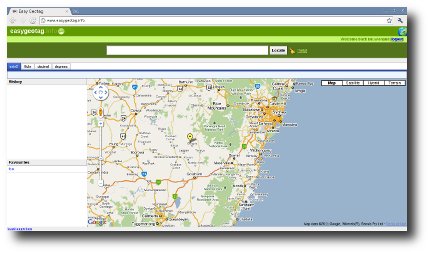If that's what you're looking for, some variation on below may be of
use. In this approach, you build up a list of pages similar to the
paginator object page_range but with only the relevant pages
and the skip-markers identified.
from django.core.paginator import Paginator
import unittest
class Pages:
def __init__(self, objects, count):
self.pages = Paginator(objects, count)
def pages_to_show(self, page):
# pages_wanted stores the pages we want to see, e.g.
# - first and second page always
# - two pages before selected page
# - the selected page
# - two pages after selected page
# - last two pages always
#
# Turning the pages into a set removes duplicates for edge
# cases where the "context pages" (before and after the
# selected) overlap with the "always show" pages.
pages_wanted = set([1,2,
page-2, page-1,
page,
page+1, page+2,
self.pages.num_pages-1, self.pages.num_pages])
# The intersection with the page_range trims off the invalid
# pages outside the total number of pages we actually have.
# Note that includes invalid negative and >page_range "context
# pages" which we added above.
pages_to_show = set(self.pages.page_range).intersection(pages_wanted)
pages_to_show = sorted(pages_to_show)
# skip_pages will keep a list of page numbers from
# pages_to_show that should have a skip-marker inserted
# after them. For flexibility this is done by looking for
# anywhere in the list that doesn't increment by 1 over the
# last entry.
skip_pages = [ x[1] for x in zip(pages_to_show[:-1],
pages_to_show[1:])
if (x[1] - x[0] != 1) ]
# Each page in skip_pages should be follwed by a skip-marker
# sentinel (e.g. -1).
for i in skip_pages:
pages_to_show.insert(pages_to_show.index(i), -1)
return pages_to_show
class TestPages(unittest.TestCase):
def runTest(self):
objects = [x for x in range(0,1000)]
p = Pages(objects, 10)
self.assertEqual(p.pages_to_show(0),
[1, 2, -1, 99, 100])
self.assertEqual(p.pages_to_show(1),
[1,2,3,-1,99,100])
self.assertEqual(p.pages_to_show(2),
[1,2,3,4,-1,99,100])
self.assertEqual(p.pages_to_show(3),
[1,2,3,4,5,-1,99,100])
self.assertEqual(p.pages_to_show(4),
[1,2,3,4,5,6,-1,99,100])
self.assertEqual(p.pages_to_show(5),
[1,2,3,4,5,6,7,-1,99,100])
self.assertEqual(p.pages_to_show(6),
[1,2,-1,4,5,6,7,8,-1,99,100])
self.assertEqual(p.pages_to_show(7),
[1,2,-1,5,6,7,8,9,-1,99,100])
self.assertEqual(p.pages_to_show(50),
[1,2,-1,48,49,50,51,52,-1,99,100])
self.assertEqual(p.pages_to_show(93),
[1,2,-1,91,92,93,94,95,-1,99,100])
self.assertEqual(p.pages_to_show(94),
[1,2,-1,92,93,94,95,96,-1,99,100])
self.assertEqual(p.pages_to_show(95),
[1,2,-1,93,94,95,96,97,-1,99,100])
self.assertEqual(p.pages_to_show(96),
[1,2,-1,94,95,96,97,98,99,100])
self.assertEqual(p.pages_to_show(97),
[1,2,-1,95,96,97,98,99,100])
self.assertEqual(p.pages_to_show(98),
[1,2,-1,96,97,98,99,100])
self.assertEqual(p.pages_to_show(99),
[1,2,-1,97,98,99,100])
self.assertEqual(p.pages_to_show(100),
[1,2,-1,98,99,100])
if __name__ == '__main__':
unittest.main()

